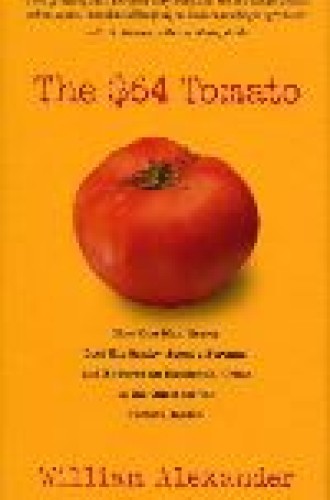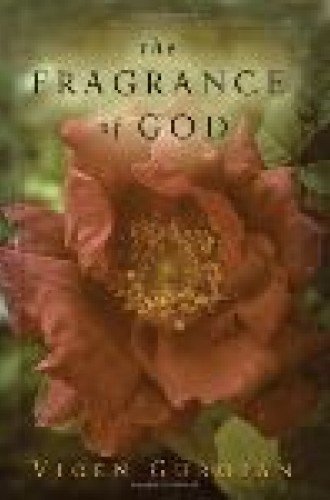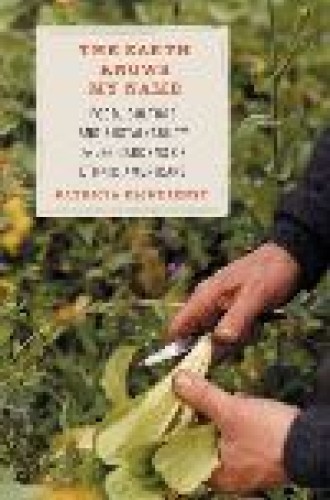The $64 Tomato/The Fragrance of God/The Earth Knows My Name
Usually when I pull a book on gardening down from a shelf, I would like to know why peas did not come up well this year and what to do about the worms that eat holes in carrots. The authors of these books are not out to solve my gardening problems. Instead they consider background issues, each author in a different way. The first book appears to have been written for entertainment, the second for inspiration and the third as social history.
Of the three writers, William Alexander shares the most about himself. We learn about his childhood, his family life, his sex life, the trials of finding a house in the country and the endless difficulties of locating reliable help in order to develop a garden. He is the quintessential innocent in the wilderness, just barely finding his way.
He is also a good record keeper. The price of his tomato is based on a tally of money spent on the garden. Among the costs are $300 for design, $8,500 for the initial construction, and $1,200 for steel edging. “Not counting thousands of dollars of my labor thrown in for free, or yearly expenditures on seeds and seedlings, I ended up with the shocking figure of $16,565.” Some of these expenses seem unnecessary, though I am not familiar with Alexander’s context. When my wife and I wanted to develop a garden, we simply selected a spot and found a way to have it plowed. We did not perceive a need for extensive planning and landscaping.
In the end, Alexander and his wife conclude that the gardening is worth it “for the food. . . . There is really nothing like a fresh August tomato.” Alexander says further that “gardening is, by its very nature, an expression of the triumph of optimism over experience. No matter how bad this year was, there’s always next year.” That is a sentiment with which all gardeners can identify.
Vigen Guroian shares enough of his own experience for readers to place him in time and space, but his is a more reflective message. Quoting repeatedly from scripture and the saints, he wants readers to receive the full benefit of gardening spirituality. He rejects both the position that nature must be protected from gardeners and the opposite idea that anything goes in gardening as long as the bottom line is strong. The latter “is an exalted view of human freedom that sets human beings radically apart from the rest of Creation. . . . It is disrespectful of Creation and of the holiness of God.”
As for himself, Guroian finds lessons in the garden, where he has “been working leaf mold, grass clippings, peat moss and manure into the raised beds.” His descriptions identify him with organic gardening and the intensive handwork of raised beds. “I spend more time on my knees in the garden than in holy sanctuary,” he asserts.
Throughout the book we pick up snippets about the author’s wife and children, the death of the beloved family dog, and the family’s move from a home in Reisterstown, Maryland, to a five-acre lot near Culpeper, Virginia. Like the Alexanders, this is evidently a family of more than average means.
Guroian’s last chapter is titled “Resurrection Garden,” and most of it is conceived as a letter to his mother, who had suffered a stroke not long before. It is a frank recognition of the fragility of life and an appreciation of his mother. This meditation occupies 18 pages in the book. To me it seems overwritten.
Patricia Klindienst’s book is completely different. For three years the author “traveled the United States visiting the gardens of ethnic Americans whose stewardship of the land is an expression of their desire to preserve their cultural identity from all that threatens their survival as a people.” Stewardship and survival are her central concerns.
Most of the people Klindienst has interviewed are migrants of some sort. Among them are Gullah people of South Carolina, who are descended from slaves; Nisei of Washington state, who remember being interred during World War II; and Khmer gardeners in Amherst, Massachusetts, who tell stories of persecution and executions by the Khmer Rouge in Cambodia. Each of these groups has a distinctive cuisine, and each has encountered unique problems, especially economic and social.
Klindienst does not dwell on ordinary gardening vexations such as those described at length by Alexander. The nature of her concerns is highlighted by a quote from Sir Albert Howard, who wrote, in The Soil and Health, “Why has civilization proved such a disastrous affair? The answer is simple. Our industries, our trade, and our way of life had been based first on the exploitation of the earth’s surface and then on the oppression of one another—banditry pure and simple.”
Klindienst also visited a Yankee farmer in Connecticut whose ancestors “sanctioned a religious and political ideology lending credence to a form of economic and ecological imperialism that would give rise to incalculable suffering for Indians and whites alike.” This descendant, one Whit Davis, is still cultivating a variety of corn that Europeans obtained from Native Americans, some of whose scattered descendants are now moving back into the area and would like to begin growing the corn again. So Davis donated seven ears of corn and asked the author to deliver them.
We do not learn much from this book about how to keep grackles out of the corn. But we can be stirred by the discussion of social, ecological and economic issues facing all of us who are concerned to pass on a tradition of gardening. Of these three books, Klindienst’s is the most urgent for people concerned about protecting the earth and saving people from economic and social oppression. But Alexander’s is good for bedtime reading and Guroian’s for morning devotions.







